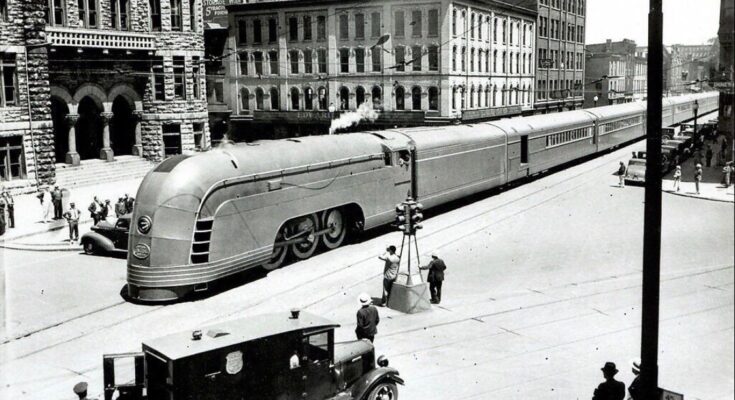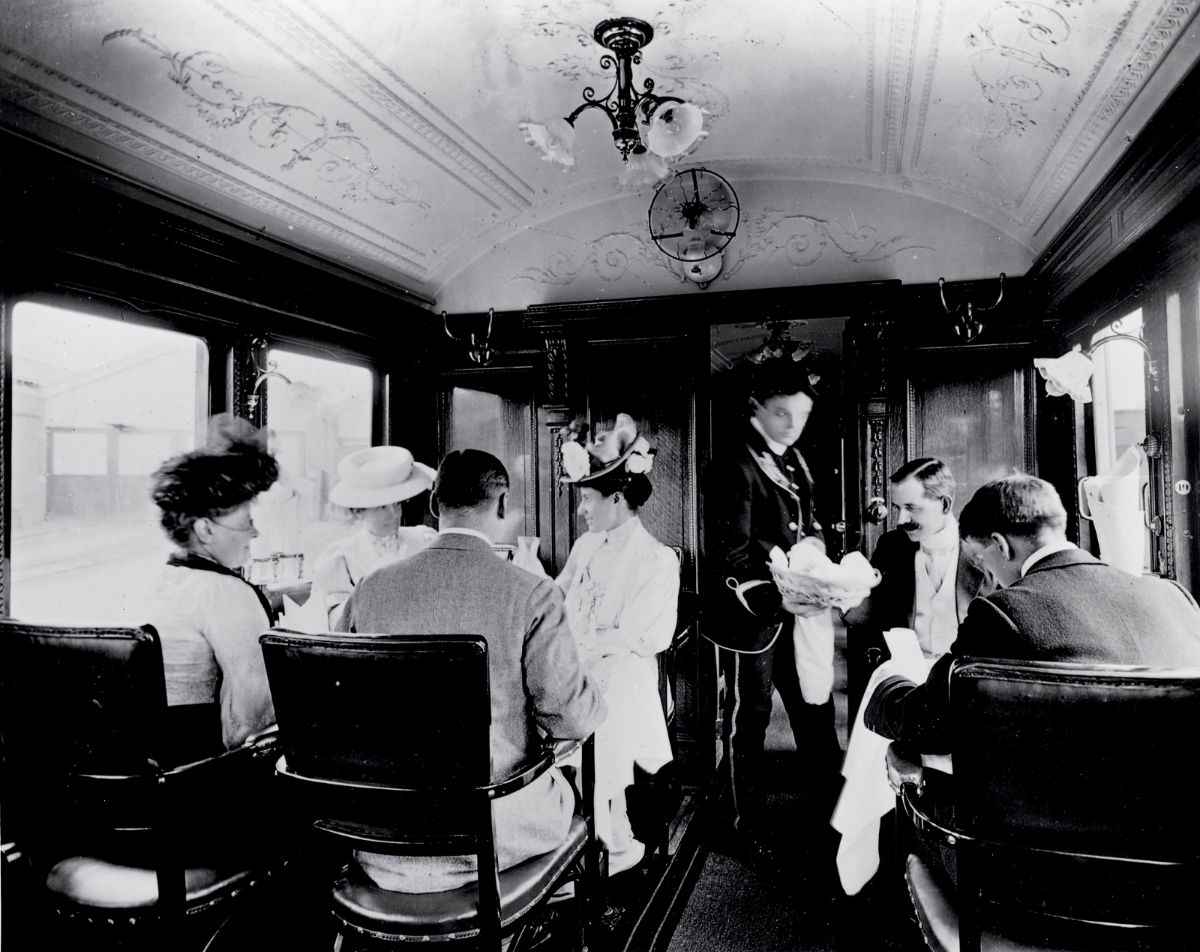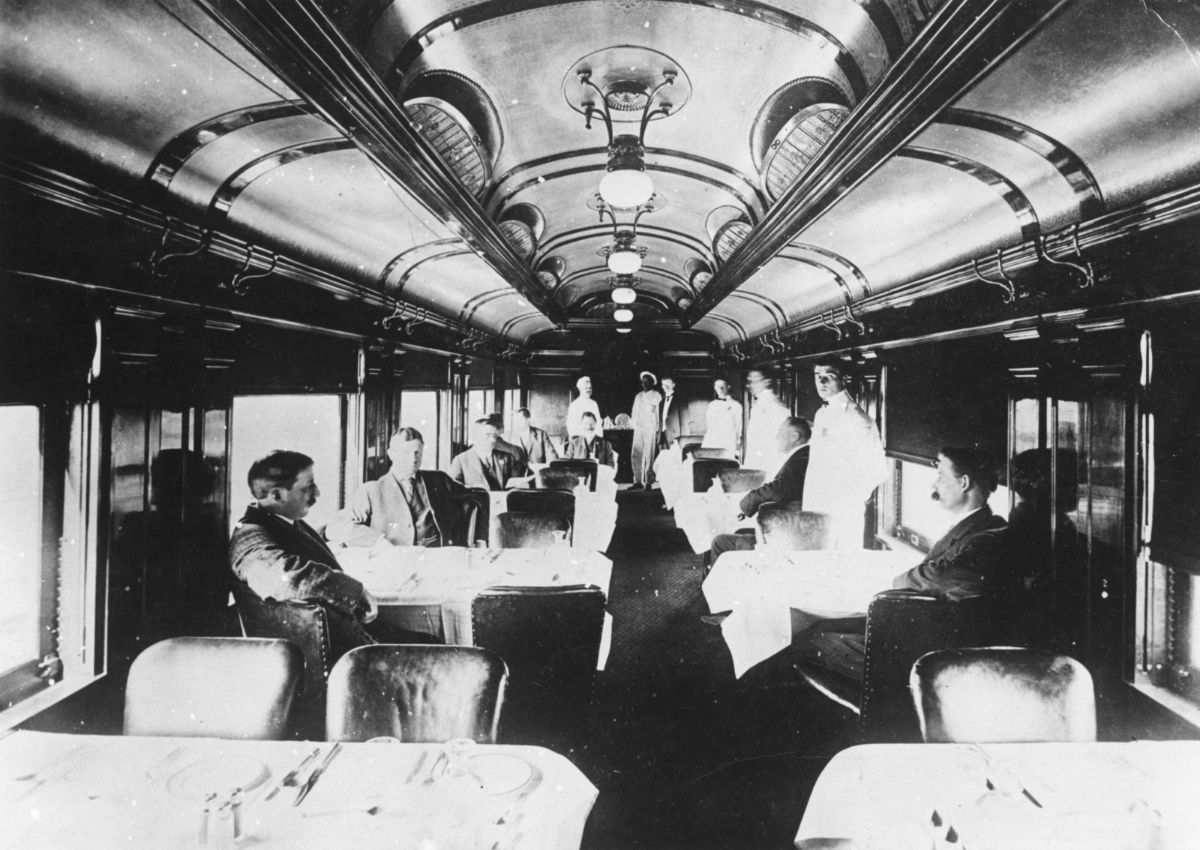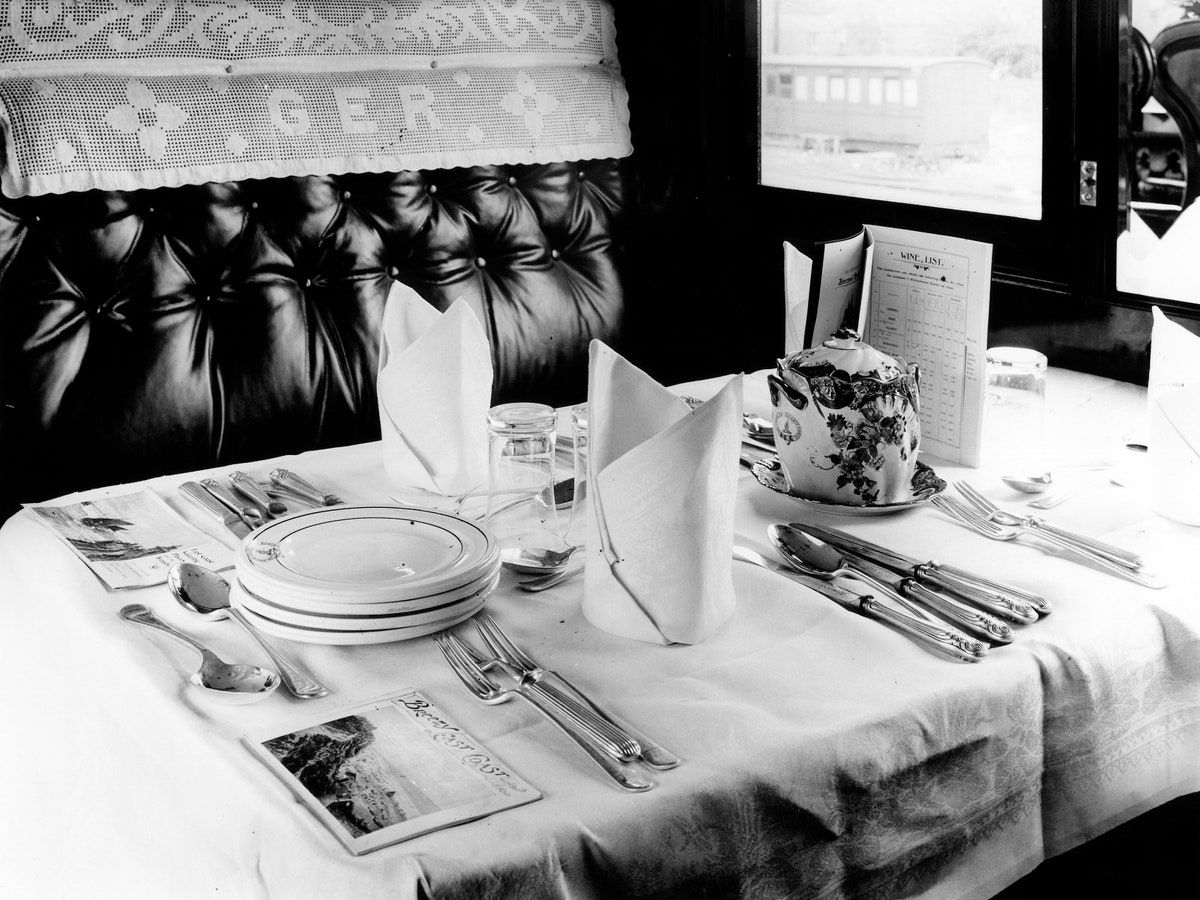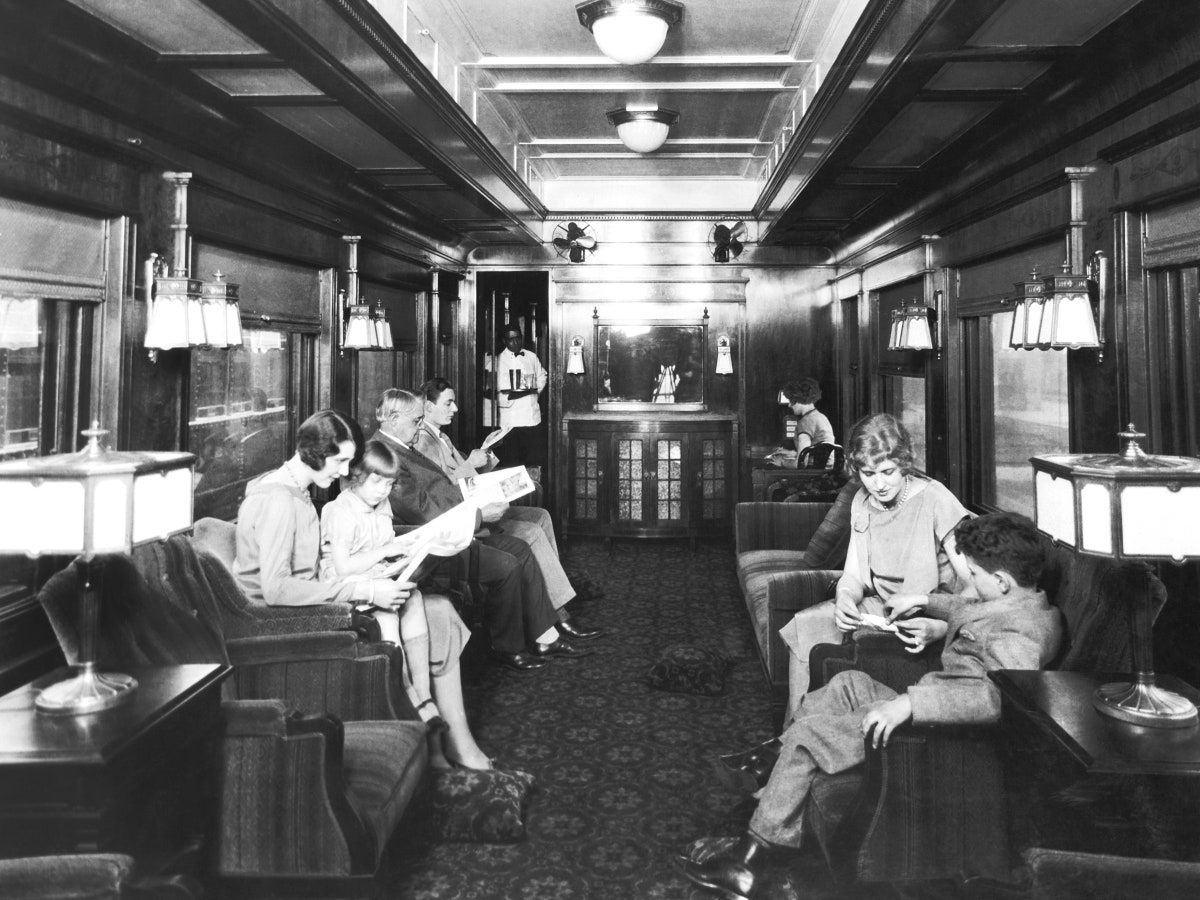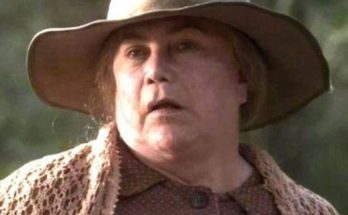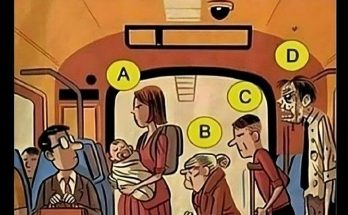 At the beginning of the 1900s, leisure travel in general was something experienced exclusively by the wealthy and elite population.
At the beginning of the 1900s, leisure travel in general was something experienced exclusively by the wealthy and elite population.
In the early-to-mid-20th century, trains were steadily a popular way to get around. Through these vintage photos, we can see what train travel looked like in the good old days with the lavish furnishings and fine dining that holds a special place in the railroad’s rich history.
The 1920s and 1930s were a kind of golden age for rail travel in the U.S. and Europe, a period when railroads were portrayed as modern amenities that carried passengers to romantic getaways in luxury and comfort.
This was also a decade of prosperity and economic growth, and the first time middle-class families could afford one of the most crucial travel luxuries: a car.
Automobiles reduced demand for short-haul rail service because people could easily drive from one town to the next, but the unpaved surfaces of most roads and the uncertainty of amenities like gas stations and wayside restaurants made train travel for long distances the more convenient and preferred method of transportation.
Making long-distance rail travel comfortable required a growing number of porters and staff who catered to passengers’ every whim.
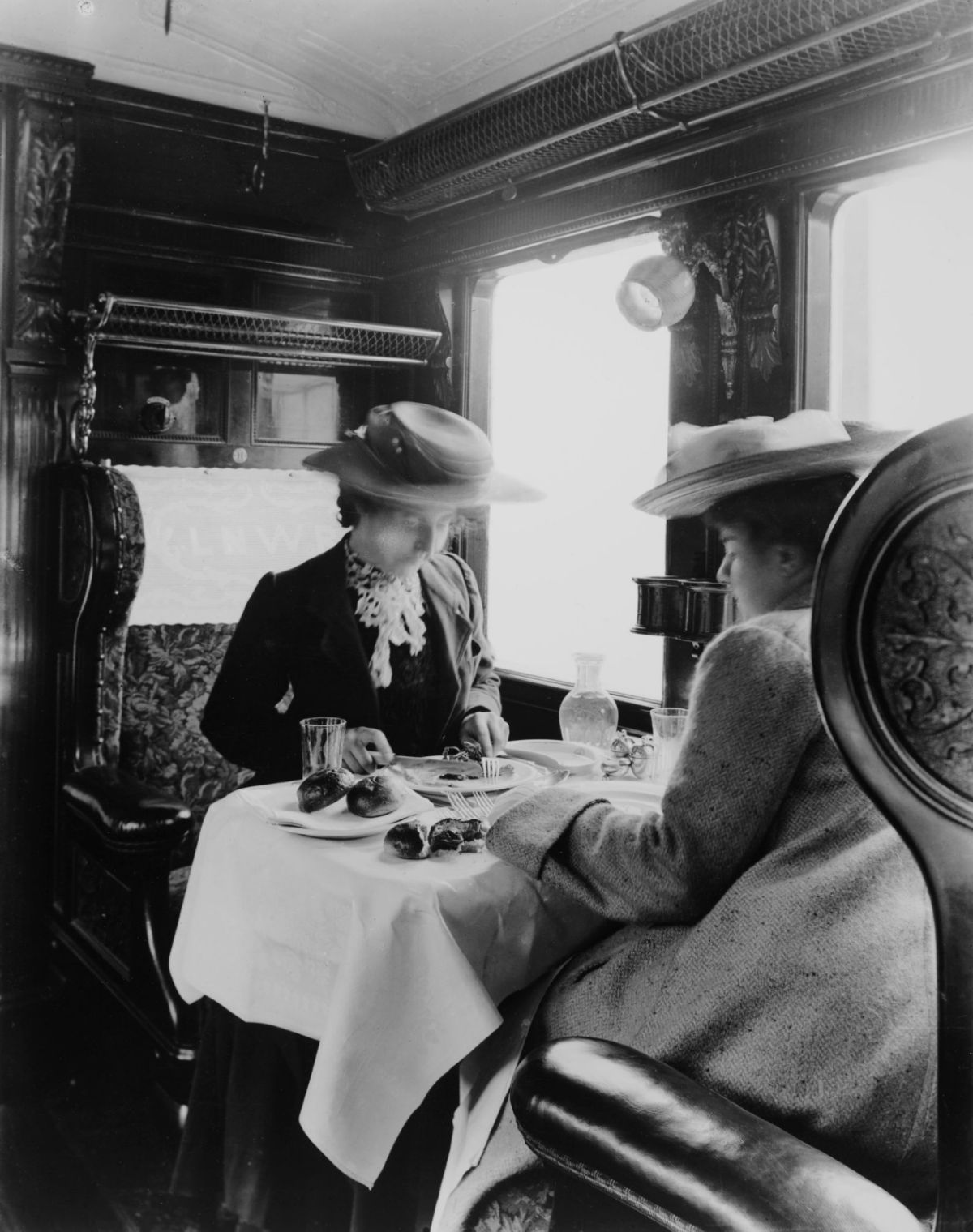
Two female passengers eating a meal in a London & North Western Railway dining car, 1905.
During the same decades, American railroads like New York Central embarked on new advertising campaigns to confront the growing threat from automobiles.
Posters, calendars, and magazine advertisements presented images that romanticized train travel, their destinations, and the sleek, new streamlined locomotives that moved passengers.
New York Central hired Industrial designer Henry Dreyfuss, who redesigned not only their locomotives and passenger cars but nearly everything the passenger may encounter from tableware to matchbooks.
